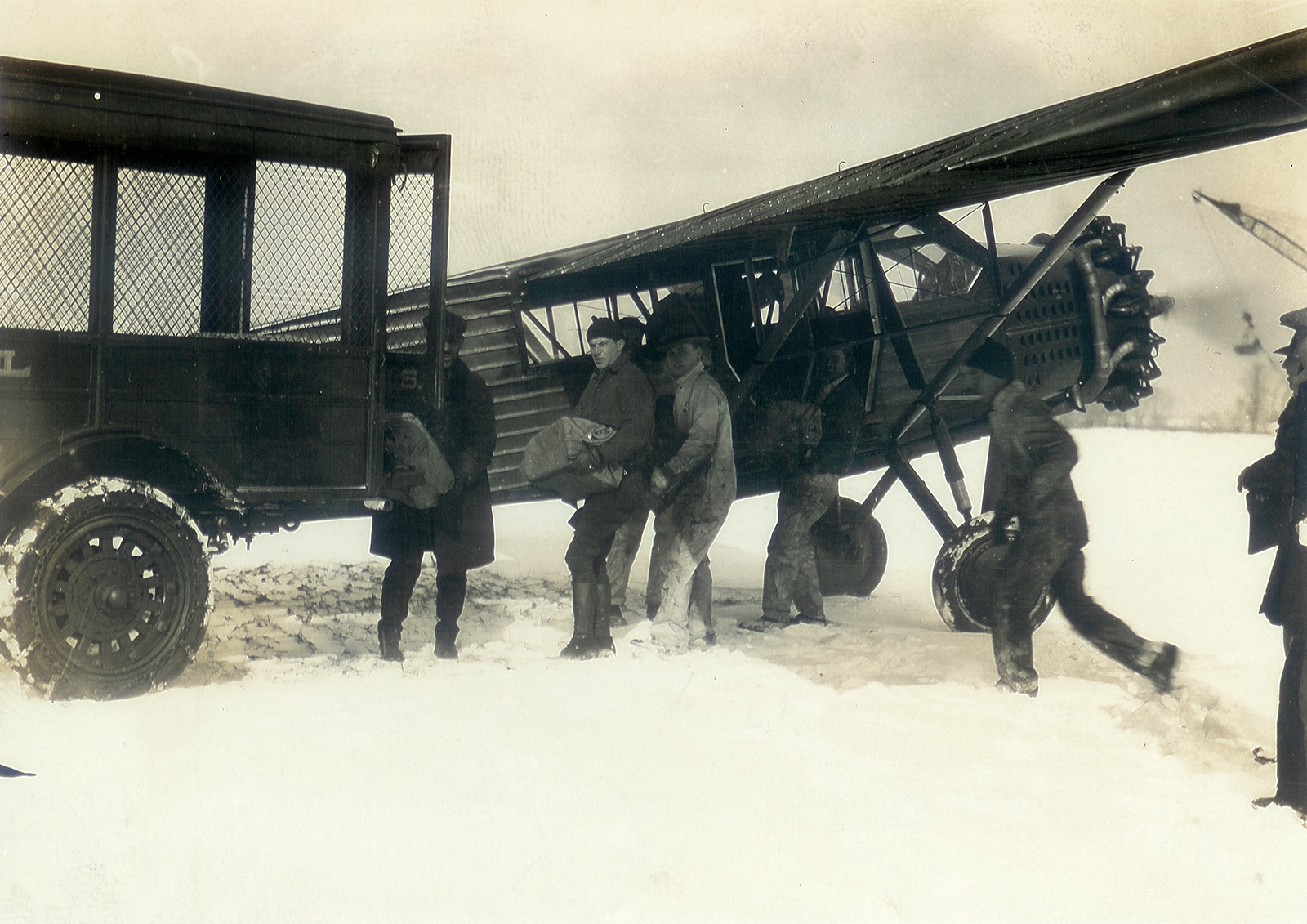Good neighbors make good investments. At least T. Higbee Embry seemed to think so. As a civic leader, he persuaded Cincinnati to offer incentives to Metal Aircraft Corporation to base production of their All-Metal Flamingo G-1 at Lunken Airport. He believed in the Flamingo so much that he became the chief financial backer and served on the board of directors.
The G-1 was built of welded steel tube covered with sheet duralumin, an aluminum alloy. It was powered by a Pratt & Whitney R-1340 Wasp 9-cylinder air-cooled, radial piston engine with 410 horsepower. The Flamingo could reach a top speed of 140 mph and a cruising speed of 115 mph. Advertisements promised that “every inch of skin and every strut of the structure” was metal and that the design delivered low operating and maintenance costs, reserve power and a high cruising speed. Designer Ralph R. Graichen had already earned considerable industry credibility as the co-designer of the Ford Tri-Motor.
Embry’s support influenced Embry-Riddle flight school’s relationship with this new plane. The company signed on as a distributor, helped publicize the aircraft, added Flamingos to their fleet and brought students in to observe production. A 1929 issue of the company’s “Sky Traffic” newsletter reported that course materials from the ground school illustrated “modern methods employed in building this ship from raw material to the finished state.”
Maiden Flight
The Flamingo made its first official flight from Lunken Airport in April 1928, and Embry-Riddle contributed to the hoopla. Mrs. Embry christened the craft and after it landed, hung a basket of flowers from the propeller hub,
adding a little eye candy for the photographers who turned out to cover the maiden flight. Riddle presented Thomas Halpin, the builder and pilot, with a wreath as a token of good luck from the fliers on the field.

The Flamingo accommodated six to eight passengers (depending on whether you opted for the lavatory) and 600 pounds of baggage or mail. As a show of support for the hometown manufacturer (and his partner’s finances), Riddle added three Flamingos to the company’s air mail fleet at a cost of $150,000. Metal Aircraft Corporation subsidiary Mason-Dixon Air Lines joined Embry-Riddle on the client list in 1929, as did a few regional carriers.
Early Accident Leads to Upgrades
Months after the Lunken demonstration, Halpin suffered a fractured pelvis when he crashed his Flamingo at Bowman Field near Louisville. The plane nosed into damp earth and overturned. Metal Aircraft Corporation issued a statement that a broken gas line caused the accident and if the plane were not all-metal, the accident would have resulted in fatalities. They emphasized that the only damages to the sturdy metal plane were to the flipper, rudder and one wing, a bent propeller and a broken window.
The accident was an opportunity for fine-tuning. The G-2 gained a new nose and cowl, larger tail surface and corrugations on the fuselage that were two inches closer together. The insulated cabin was finished in mahogany. It was advertised as both efficient and luxurious, a “workhorse with wings” with a useful life of 10 years and a six-year warranty. The company promoted passenger comfort thanks to upholstered seats, headrests, reading lights and a soundproof cabin. There was also a heater.
Making Headlines
In November 1930, Capt. Lionel Stephan, who graduated from the Embry-Riddle Flying School in 1927, piloted a Flamingo on Embry-Riddle’s Contract Air Mail Route 24. He carried seven passengers and their luggage in addition to the mail. His route was from Cincinnati to Chicago by way of Indianapolis.

When a passenger closed the heater vent at the floor duct, insulation between the wooden floor and metal fuselage ignited. Stephan landed safely in an Indianapolis cow pasture. However, a passenger used the pyrene fire extinguisher, blanketing the cabin with oxygen-excluding, toxic fumes. Amid rattled passengers and curious livestock, Stephan assessed the plane, removed burned insulation and everyone re-boarded for the last leg of the trip to Chicago.
While the unexpected landing in Indianapolis made regional news, a later Flamingo incident was an international story. El Rio Caroni was flown by Jimmie Angel, a bush pilot searching for gold in a remote area of Venezuela. In 1933, he introduced a waterfall in remote Bolívar State to the world. Angel Falls, with a drop 15 times higher than Niagara Falls, was named for the pilot after he crashed his Flamingo in 1937. He nose-dived into soft mud, forcing his crew to make an 11-day hike down from a mesa near the falls back to civilization. El Rio Caroni was not recovered for more than 30 years. The Aeronautics Museum of Maracay restored Angel’s Flamingo and today it is on display at the airport in Ciudad Bolívar.
Ultimately, the flock of Flamingo G-2s numbered only 21. Increasing competition from other all-metal aircraft and the Wall Street Crash in October 1929 signaled an end to the Metal Aircraft Corporation.
